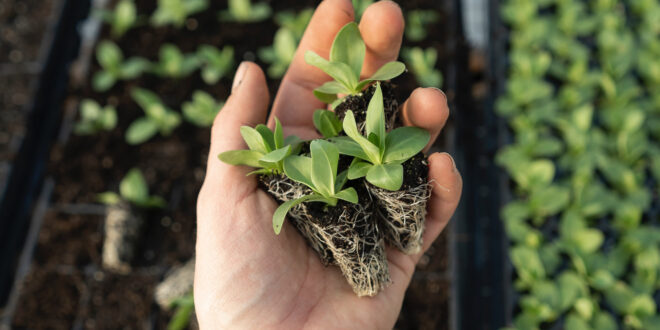Make no mistake about it, Kiwis LOVE their spuds! So much so, we grow around 525,000 tonnes of them a year, and harvest over 50 different varieties. We depend on spuds for our vitamin C (most Kiwis get 30% or more of their vitamin C from spuds), and we are increasingly sending them off to factories to be turned into snack foods and heat-and-eat options. Despite all this, many of us are still confused about the difference between early, mid and late variety spuds, and when to plant them. So we’ve done the homework for you – read on!
Early potatoes
If you’re chowing down on potatoes on Christmas day, it’s almost certain they will be an ‘early’ variety. Early potatoes have particular characteristics: they tend to be higher in moisture (which gives them a waxy texture), their skins are thin (which means they can be scrubbed rather than peeled), and they are generally smaller in size than later season potatoes. While these characteristics only increase their deliciousness, it does mean early potatoes are not good ‘keepers’ i.e. they won’t store well through the winter months. This is why most home gardeners grow only enough early potatoes to last them through the summer months.
Early potatoes are planted reasonably close together (space them about 30cm apart). In warmer regions, they go in the ground as soon as the first frosts have abated. In cold regions, they are often planted earlier but under cover of cloches or in bags in the greenhouse. They can also be planted outdoors in ‘mounds’ where the soil warms up more quickly than it does at ground level, in which case they need to be covered overnight with frost cloth when frost is predicted. Early varieties include: Rocket, Swift, Cliffs Kidney, and Ilam Hardy.
Main crop potatoes 45cm
Main crop potatoes are the spuds that sustain us through the winter months. They tend to be lower in moisture (which gives them a more floury texture), have a thicker skin (which helps prevent moisture loss and shrivelling during storage), and be larger in size. The traditional time for planting main crop potatoes is Labour Day, but this varies from region to region. In cold parts of the country, gardeners tend to plant their main crop potatoes more deeply than in warmer regions. This is so, by the time the tender shoot emerges through the ground, danger from frost has hopefully passed. Main crop seed potatoes are usually planted between 45 and 70cm apart to give the large tubers plenty of space to develop. Main crop varieties include Agria (a popular chip and roasting potato), Desiree (an excellent keeper), and Purple Passion (an attractive, uniformly shaped purple potato with a purple and cream flecked centre).
Late potatoes
Late potatoes take longer to mature than early or main crop varieties. Generally speaking, they require 3 months before they are harvestable, so those in cold regions need to count backwards from the date of their first predicted frost to help decide when to sow. They should be prepared to cover the foliage of their ‘earlies’ if frost strikes earlier than usual. Late potatoes should be sown 35-45cm apart, in a sunny position, and just 10 to 15cm below the ground so they come through the soil quickly. Some late varieties are more suited to storage than others, so depending on your intentions for them, choose which seed you sow. Popular varieties include Rua (which is a heavy cropper), Heather (which is a good keeper), and fast growing fingerlings (a range of smaller, elongated potatoes).
The best news is early, main and late varieties of potato can be harvested, for immediate eating, at any stage when they are large enough. If you’re not already growing your own spuds, why not join the many Kiwi gardeners who are? Whether you do it in a bag, a bucket or the garden bed, the results will be delicious!









Join the Discussion
Type out your comment here:
You must be logged in to post a comment.